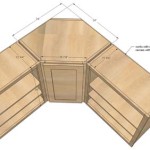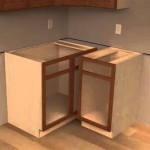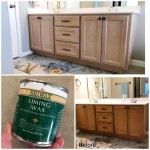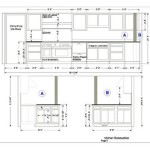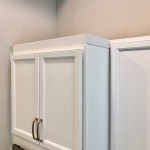The Enduring Appeal of Off-White Base Kitchen Cabinets
The kitchen, often considered the heart of the home, demands a careful balance of functionality and aesthetics. Cabinetry plays a pivotal role in achieving this harmony, providing both storage and visual appeal. While trends come and go, off-white base kitchen cabinets have maintained a consistent presence in kitchen design, lauded for their versatility, timelessness, and ability to brighten and expand perceived space. This article explores the characteristics, benefits, and design considerations associated with off-white base cabinets, providing a comprehensive overview for those considering incorporating them into their kitchen remodel or new build.
Off-white, encompassing a spectrum of shades from creamy vanilla to subtle beige, offers a nuanced alternative to stark white. This subtle variation allows for greater flexibility in matching other kitchen elements, such as countertops, backsplashes, and appliances. The warmth inherent in off-white tones also contributes to a more inviting and comfortable atmosphere, counteracting the sterile feel that can sometimes accompany all-white kitchens.
The popularity of off-white base cabinets stems from a combination of factors that address both practical and aesthetic concerns. The lighter color palette reflects light, making the space appear larger and brighter, a significant advantage for kitchens with limited natural light. Furthermore, off-white possesses a chameleon-like ability to adapt to various design styles, readily complementing traditional, transitional, and modern aesthetics. This inherent adaptability makes it a safe and stylish choice for homeowners seeking a long-lasting and versatile kitchen design.
The choice of material significantly impacts the overall look and durability of off-white base cabinets. Common materials include wood, plywood, MDF (Medium-Density Fiberboard), and thermofoil. Solid wood, while offering exceptional durability and a rich, natural grain, tends to be more expensive. Plywood, known for its stability and resistance to warping, provides a cost-effective alternative. MDF, a manufactured wood product, offers a smooth surface ideal for painting and is less prone to expansion and contraction due to humidity fluctuations. Thermofoil, a vinyl layer heat-bonded to MDF, provides a durable and easy-to-clean surface, often available in a range of off-white shades and textures.
The finish applied to off-white base cabinets plays a crucial role in their aesthetics and performance. Options include paint, stain, and glaze. Paint offers a vast array of color choices and sheen levels, from matte to high-gloss, allowing for precise customization. Stain, typically used on wood cabinets, enhances the natural grain and provides a transparent or semi-transparent color. Glaze, a thin layer applied over paint or stain, adds depth and dimension, often highlighting details and creating an antique or distressed look. The chosen finish should not only complement the overall kitchen design but also withstand the daily wear and tear of a busy kitchen environment.
Hardware selection is another critical aspect of designing with off-white base cabinets. Knobs, pulls, and handles not only provide functionality but also serve as decorative accents that enhance the overall style. Options range from classic brushed nickel and antique brass to contemporary stainless steel and sleek black finishes. The hardware should complement the cabinet style and the overall kitchen design aesthetic. For instance, simple, understated hardware works well with modern cabinets, while more ornate designs complement traditional styles.
Key Point 1: Aesthetic Versatility of Off-White
The defining characteristic of off-white base cabinets is their remarkable versatility. They seamlessly integrate into a multitude of kitchen design styles, from the rustic charm of farmhouse kitchens to the clean lines of modern spaces. In traditional kitchens, off-white cabinets pair beautifully with intricate moldings, detailed hardware, and warm-toned countertops, creating a classic and elegant ambiance. In transitional kitchens, they strike a balance between traditional and modern elements, often combined with shaker-style doors, stainless steel appliances, and natural stone countertops. In modern kitchens, off-white cabinets contribute to a minimalist aesthetic, complemented by sleek hardware, flat-panel doors, and quartz countertops. The ability to adapt to diverse styles makes off-white a reliable and enduring choice for homeowners.
The color itself provides a neutral backdrop that allows other design elements to take center stage. It does not compete with bolder colors or patterns in countertops, backsplashes, or flooring. This neutrality also makes it easier to update the kitchen's decor over time without having to replace the cabinets themselves. A simple change of hardware or backsplash can dramatically alter the feel of the kitchen when paired with off-white cabinets.
Furthermore, off-white cabinets offer the flexibility to create a two-toned kitchen design. Pairing off-white base cabinets with darker upper cabinets, such as gray or navy, creates visual interest and depth. This approach is particularly effective in larger kitchens, where contrasting colors can define different zones within the space.
Key Point 2: Practical Benefits of Light Cabinetry
Beyond their aesthetic appeal, off-white base cabinets offer several practical benefits. The lighter color reflects light, making the kitchen appear brighter and more spacious. This is particularly advantageous in kitchens with limited natural light or smaller footprints. Darker cabinets can absorb light, making the space feel smaller and more enclosed, while off-white cabinets create an illusion of openness and airiness.
Another practical advantage is the ease of cleaning. While dark cabinets tend to show dust and fingerprints more readily, off-white cabinets conceal minor imperfections, requiring less frequent cleaning. This is particularly beneficial in high-traffic areas, such as around the sink and stovetop.
The timelessness of off-white is another practical consideration. Unlike trendy colors that may quickly fall out of favor, off-white remains a classic choice that transcends fleeting trends. Investing in off-white base cabinets is a long-term decision that ensures the kitchen will maintain its appeal for years to come. This also translates to improved resale value, as a well-maintained kitchen with off-white cabinets is likely to appeal to a wider range of potential buyers.
Durability can also be considered a practical benefit, depending on the chosen material and finish. High-quality materials and finishes will resist scratches, stains, and fading, ensuring the cabinets maintain their appearance over time. This is particularly important for base cabinets, which are more susceptible to wear and tear than upper cabinets.
Key Point 3: Design Considerations and Complementary Elements
Successfully incorporating off-white base cabinets into a kitchen design requires careful consideration of complementary elements. Countertops, backsplashes, flooring, and hardware should all be chosen to harmonize with the cabinets and create a cohesive aesthetic. Countertop options range from natural stone, such as granite and marble, to engineered materials, such as quartz and solid surface. Granite offers a unique pattern and durability, while marble provides a luxurious and elegant look. Quartz, known for its stain resistance and consistent color, is a popular choice for modern kitchens. Solid surface countertops offer seamless integration and a wide range of colors and patterns.
Backsplash materials can range from ceramic tile and glass to natural stone and metal. Subway tile, a classic choice, complements off-white cabinets in both traditional and transitional kitchens. Glass tiles add a touch of shimmer and elegance, while natural stone creates a rustic and organic feel. Metal backsplashes, such as stainless steel or copper, add a modern and industrial touch.
Flooring options include hardwood, tile, laminate, and vinyl. Hardwood flooring adds warmth and character to the kitchen, while tile offers durability and water resistance. Laminate flooring provides a cost-effective alternative to hardwood, mimicking its appearance at a lower price point. Vinyl flooring is another durable and affordable option, available in a wide range of colors and patterns.
Lighting plays a crucial role in enhancing the appearance of off-white base cabinets. Under-cabinet lighting illuminates the countertop, providing task lighting and highlighting the cabinet's details. Recessed lighting provides ambient light, illuminating the entire kitchen. Pendant lights add a decorative touch, often hung over islands or peninsulas.
Finally, the overall color palette should be carefully considered. Off-white cabinets pair well with a wide range of colors, from warm earth tones to cool blues and greens. The chosen colors should complement the cabinets and create a harmonious and inviting atmosphere. Accents of color can be introduced through accessories, such as dishware, linens, and artwork, adding personality and visual interest to the kitchen.
In conclusion, selecting off-white base kitchen cabinets requires careful consideration of material, finish, hardware, and complementary design elements. By understanding the inherent versatility and practical benefits of off-white, homeowners can create a kitchen that is both stylish and functional, reflecting their personal taste and enhancing the overall value of their home.

Off White Kitchen Cabinets A Guide For Timeless

60 Beautiful White Kitchen Ideas With Timeless Style

White Kitchen Cabinets Premium Quality And Timeless Appeal

30 Design Ideas For Luxurious Traditional White Kitchen Cabinets Decorcabinets Com

Lifeart Cabinetry Princeton Assembled 36 In X 34 5 24 Base Cabinet With 2 Door And Drawer Off White

60 Beautiful White Kitchen Ideas With Timeless Style

Casual White Maple And Walnut Kitchen Cabinets Omega

6 Inch Full Height Base Single Door Cabinet Homecrest

The 8 Best Off White Cabinet Paint Colors Part 2

Lifeart Cabinetry Princeton Assembled 30 In X 34 5 24 Base Cabinet With 2 Door And 1 Drawer Off White
Related Posts

